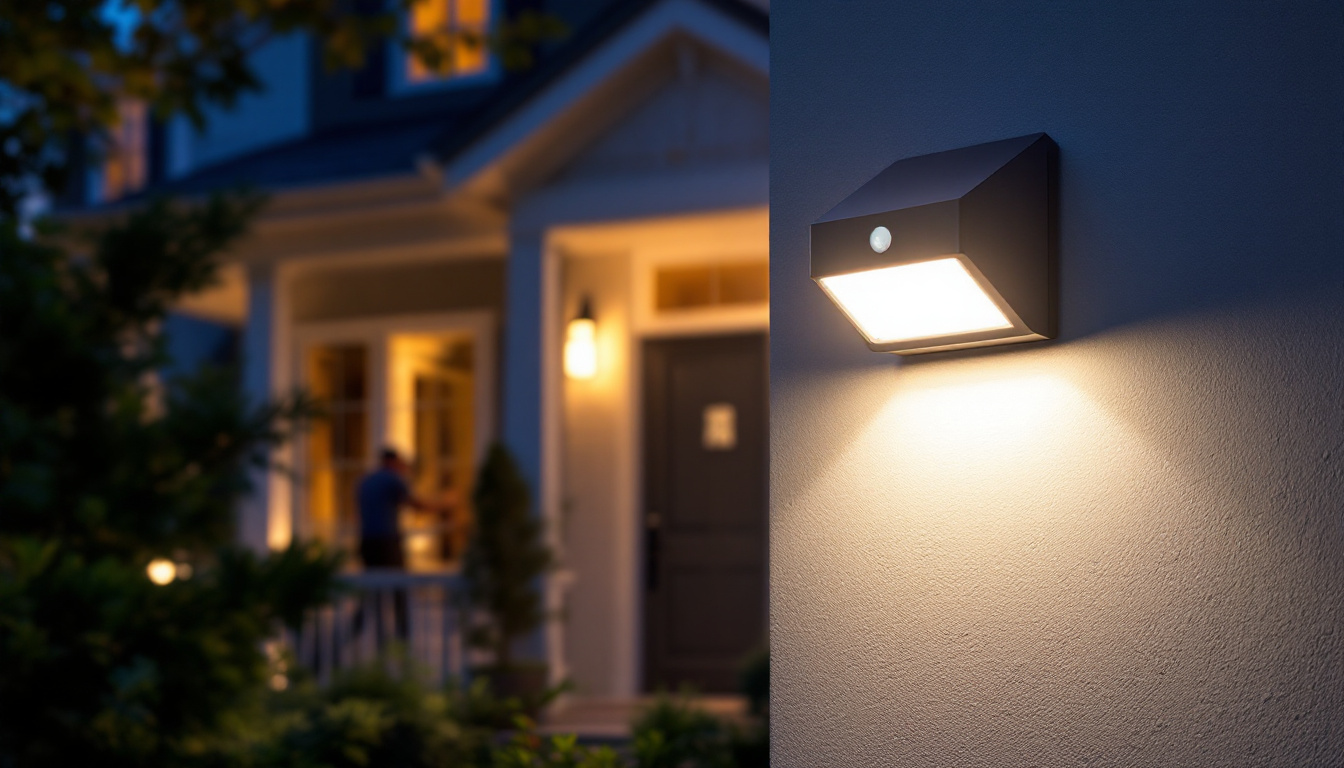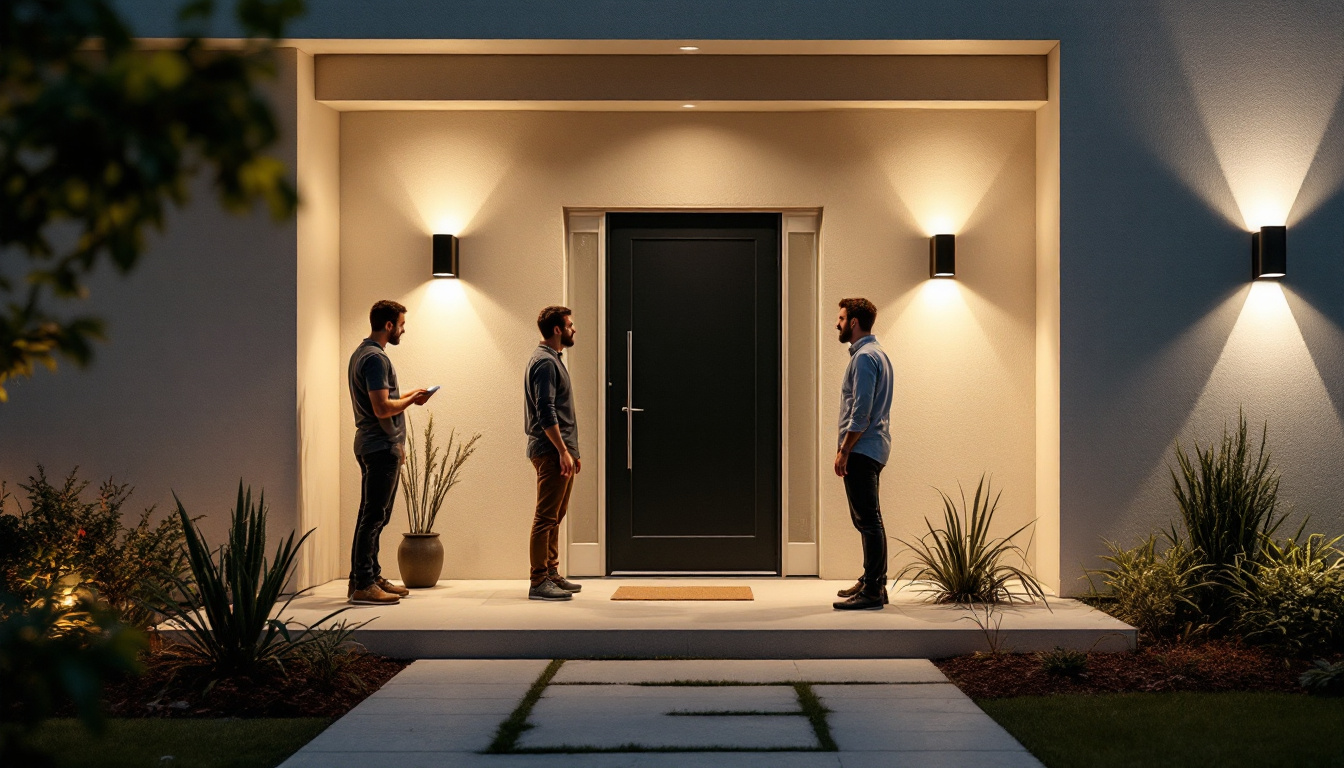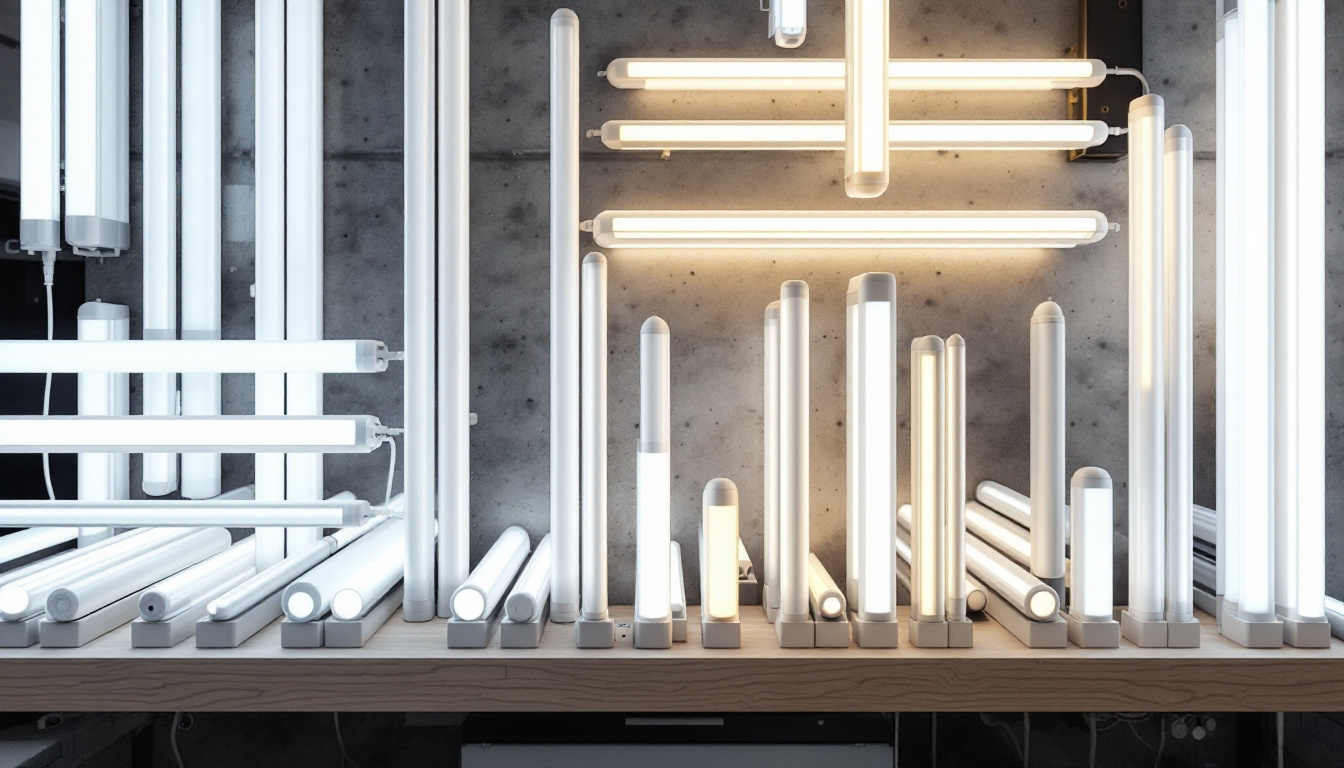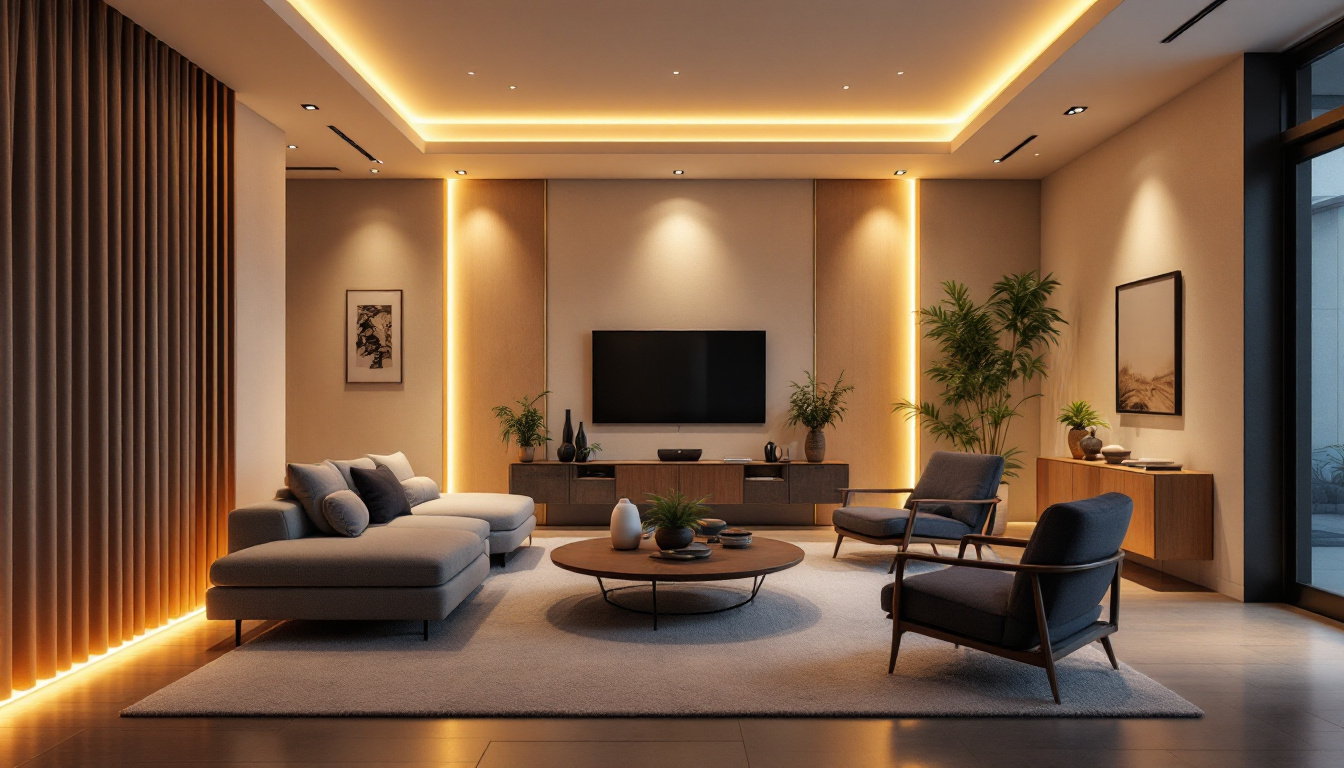
In the ever-evolving world of lighting solutions, motion sensor technology has emerged as a game-changer for lighting contractors. These innovative devices not only enhance security but also contribute to energy efficiency and convenience in residential and commercial settings. As the demand for smart home solutions continues to rise, understanding the benefits and applications of motion sensor porch lights becomes essential for contractors looking to stay competitive.
Motion sensor porch lights utilize advanced technology to detect movement and automatically activate lighting. This feature not only provides illumination when needed but also helps in conserving energy by ensuring lights are off when no motion is detected. For lighting contractors, integrating these systems into their offerings can significantly enhance their service portfolio and appeal to a broader client base.
Moreover, the integration of motion sensors into outdoor lighting systems is not just about convenience; it also plays a crucial role in enhancing safety. For instance, well-lit pathways and entryways deter potential intruders and reduce the risk of accidents during nighttime. Many modern motion sensor lights come equipped with adjustable sensitivity settings and timers, allowing homeowners to customize their lighting experience according to their specific needs. This adaptability makes them particularly appealing for contractors who wish to provide tailored solutions that meet the unique requirements of each client.
In addition to residential applications, motion sensor technology is increasingly being adopted in commercial settings, where it can lead to substantial cost savings. Businesses can benefit from reduced energy consumption by ensuring that lights are only activated when necessary, which is especially beneficial in large warehouses or retail spaces. Furthermore, the ability to integrate these systems with smart home technology, such as mobile apps and home automation systems, allows users to monitor and control their lighting remotely. This level of control not only enhances user experience but also positions contractors as forward-thinking professionals in a rapidly advancing industry.
One of the primary advantages of motion sensor porch lights is the added layer of security they provide. By illuminating entryways and pathways when movement is detected, these lights deter potential intruders and create a safer environment for homeowners. For contractors, promoting the security benefits of these lights can be a compelling selling point.
Moreover, many motion sensor lights come equipped with features such as adjustable sensitivity and timer settings, allowing homeowners to customize their security lighting according to their specific needs. This level of personalization not only enhances user satisfaction but also positions contractors as knowledgeable professionals who understand the importance of security in lighting design.
Energy efficiency is a critical consideration in today’s lighting market. Motion sensor porch lights are designed to operate only when needed, significantly reducing energy consumption compared to traditional lighting systems that remain on for extended periods. For contractors, this aspect can be highlighted to environmentally conscious clients who are looking to reduce their carbon footprint and save on energy bills.
Additionally, many modern motion sensor lights utilize LED technology, which further enhances energy efficiency. By offering clients these eco-friendly options, contractors can not only meet their clients’ needs but also contribute positively to the environment, reinforcing their commitment to sustainable practices.
Another significant benefit of motion sensor porch lights is the convenience they offer. Homeowners no longer need to fumble for light switches in the dark; the lights automatically turn on as they approach. This feature is particularly beneficial for elderly individuals or those with mobility challenges, making their daily routines safer and more manageable.
For lighting contractors, emphasizing the ease of installation and operation of these systems can attract clients who may be hesitant about adopting new technologies. Providing clear instructions and support for setup can further enhance the customer experience, ensuring satisfaction and encouraging referrals.
Passive infrared sensors are among the most common types of motion sensors used in porch lights. These sensors detect changes in infrared radiation, which is emitted by moving objects, such as people and animals. When a person approaches, the sensor activates the light, providing illumination where it is needed most.
For contractors, understanding the functionality of PIR sensors is crucial. They typically have a range of about 30 feet and can cover a wide area, making them ideal for outdoor applications. However, contractors should also be aware of potential limitations, such as sensitivity to environmental factors like wind or temperature changes, which can affect performance.
Ultrasonic sensors operate differently from PIR sensors. They emit ultrasonic waves and measure the reflection of these waves to detect movement. This technology allows for greater accuracy and the ability to detect motion through obstacles, making them suitable for various applications.
While ultrasonic sensors can be more expensive than PIR sensors, they offer unique advantages in specific scenarios. Contractors should assess the needs of their clients and recommend the most appropriate sensor type based on the environment and desired functionality.
For those seeking the best of both worlds, dual technology sensors combine the features of both PIR and ultrasonic sensors. This hybrid approach enhances reliability and reduces false triggers, making them an excellent choice for areas with high foot traffic or varying environmental conditions.
Contractors can leverage the benefits of dual technology sensors by educating clients about their superior performance and versatility. By offering a range of options, contractors can cater to diverse client needs, ensuring satisfaction and fostering long-term relationships.
When installing motion sensor porch lights, the location and height of the fixtures are critical considerations. Ideally, lights should be positioned to cover the most frequently used entry points, such as front doors and driveways. Additionally, mounting height can affect the sensor’s range and effectiveness; typically, lights should be installed between 6 to 8 feet above the ground.
Contractors should also consider potential obstructions, such as trees or structures, that could block the sensor’s field of view. Proper placement ensures that the lights activate as intended, providing maximum security and convenience for homeowners.
Another essential aspect of installation is ensuring a reliable power supply. Motion sensor porch lights can be hardwired or battery-operated, and contractors should evaluate the best option based on the client’s preferences and the existing electrical infrastructure. Hardwired options often provide more consistent performance, while battery-operated lights can offer flexibility in placement.
Contractors must also adhere to local electrical codes and regulations during installation. This not only ensures safety but also enhances the contractor’s reputation as a professional who prioritizes compliance and quality workmanship.
After installation, testing and calibrating the motion sensor lights is crucial to ensure optimal performance. This involves checking the sensor’s range, sensitivity, and timer settings to confirm that it meets the client’s expectations. Providing clients with a demonstration of how to adjust settings can empower them to customize their lighting experience further.
By taking the time to thoroughly test and calibrate the system, contractors can minimize callbacks and enhance customer satisfaction. A well-installed and functioning motion sensor porch light can lead to positive reviews and referrals, contributing to the contractor’s long-term success.
The integration of motion sensor porch lights into smart home systems is a growing trend that lighting contractors should embrace. Many modern motion sensor lights can connect to home automation systems, allowing homeowners to control their lighting remotely via smartphone apps or voice commands.
This level of integration not only enhances convenience but also allows for greater customization. Homeowners can set schedules, adjust brightness, and receive notifications when motion is detected, providing a comprehensive security solution. Contractors who can offer smart home integration will appeal to tech-savvy clients and position themselves as leaders in the industry.
As the demand for stylish outdoor lighting solutions increases, manufacturers are responding with a variety of designs for motion sensor porch lights. From sleek modern fixtures to traditional lantern styles, there are options to suit every architectural style and personal preference.
Contractors should stay informed about the latest design trends and product offerings to provide clients with aesthetically pleasing solutions that enhance their home’s curb appeal. By combining functionality with design, contractors can elevate their service and meet the diverse needs of their clients.
With the growing emphasis on energy efficiency, many homeowners are looking for ways to manage their energy consumption more effectively. Motion sensor porch lights can be integrated into broader energy management systems, allowing homeowners to monitor and control their energy use.
Contractors can educate clients on the benefits of these systems, highlighting how motion sensor lighting contributes to overall energy savings. By positioning themselves as knowledgeable advisors on energy management, contractors can build trust and establish long-lasting relationships with their clients.
Motion sensor porch lights are revolutionizing the way lighting contractors approach their work. By understanding the benefits, types, and installation considerations of these innovative lighting solutions, contractors can enhance their service offerings and meet the evolving needs of their clients.
As the demand for smart, energy-efficient, and aesthetically pleasing lighting solutions continues to grow, contractors who embrace motion sensor technology will position themselves for success in a competitive market. By staying informed about industry trends and providing exceptional service, lighting contractors can transform their businesses and create lasting value for their clients.
Ready to elevate your lighting projects with the latest in motion sensor technology? Look no further than LumenWholesale, where we offer an extensive selection of spec-grade lighting products designed to meet the needs of today’s contractors. With unbeatable wholesale prices and no middleman, you can trust that you’re getting the best value for your investment. Enjoy the convenience of bulk buying with free shipping and equip your projects with reliable, high-performance lighting solutions. Take the first step towards transforming your business with quality, affordability, and convenience. Visit LumenWholesale now for Wholesale Lighting at the Best Value.

Discover effective strategies for training your team in selecting and installing outside door lights.

Discover the ultimate guide to fluorescent tube lengths with our essential checklist tailored for lighting professionals.

Discover the answers to lighting contractors’ most frequently asked questions with All Star Lighting Supplies Inc.

Discover expert tips and best practices for selecting and installing recessed LED lighting bulbs, straight from seasoned lighting contractors.